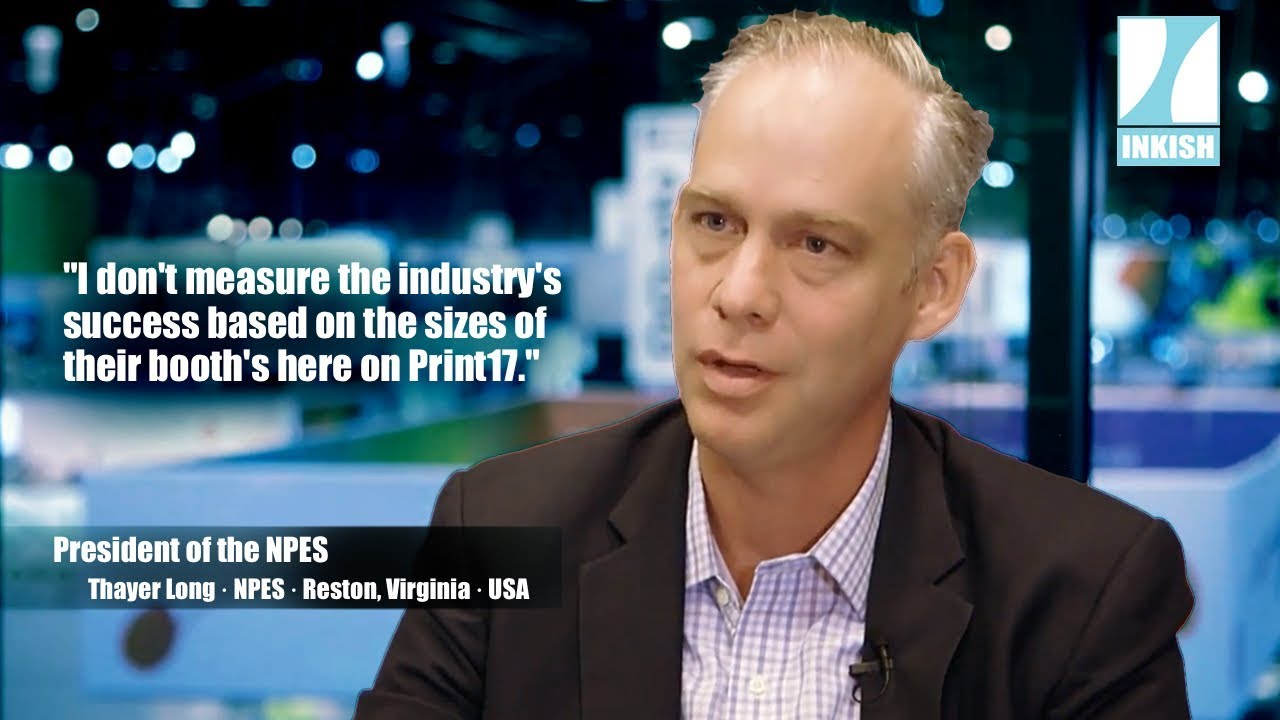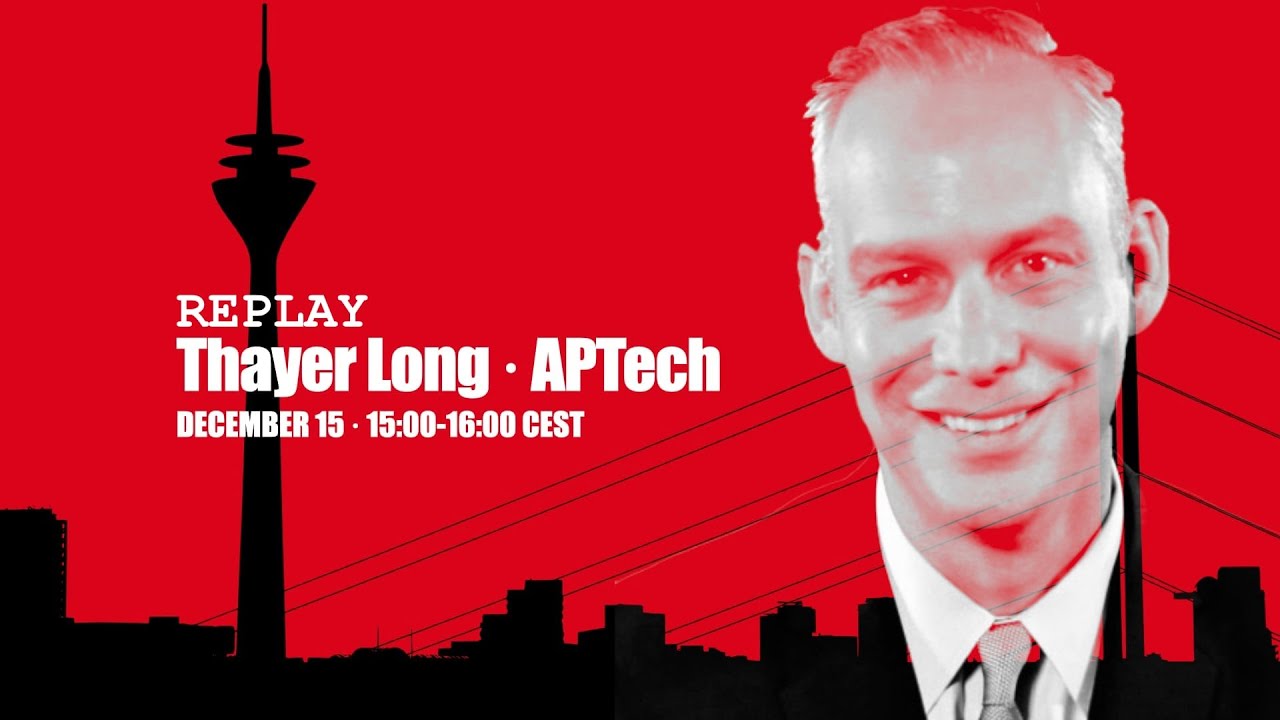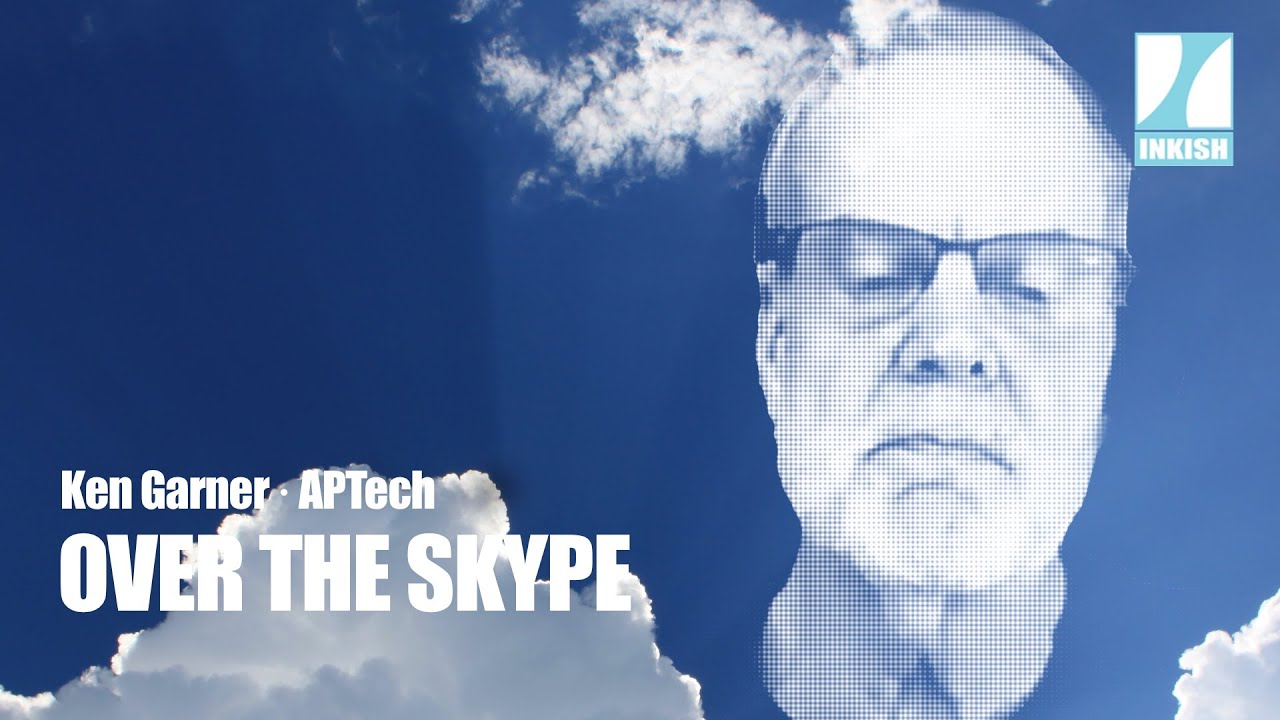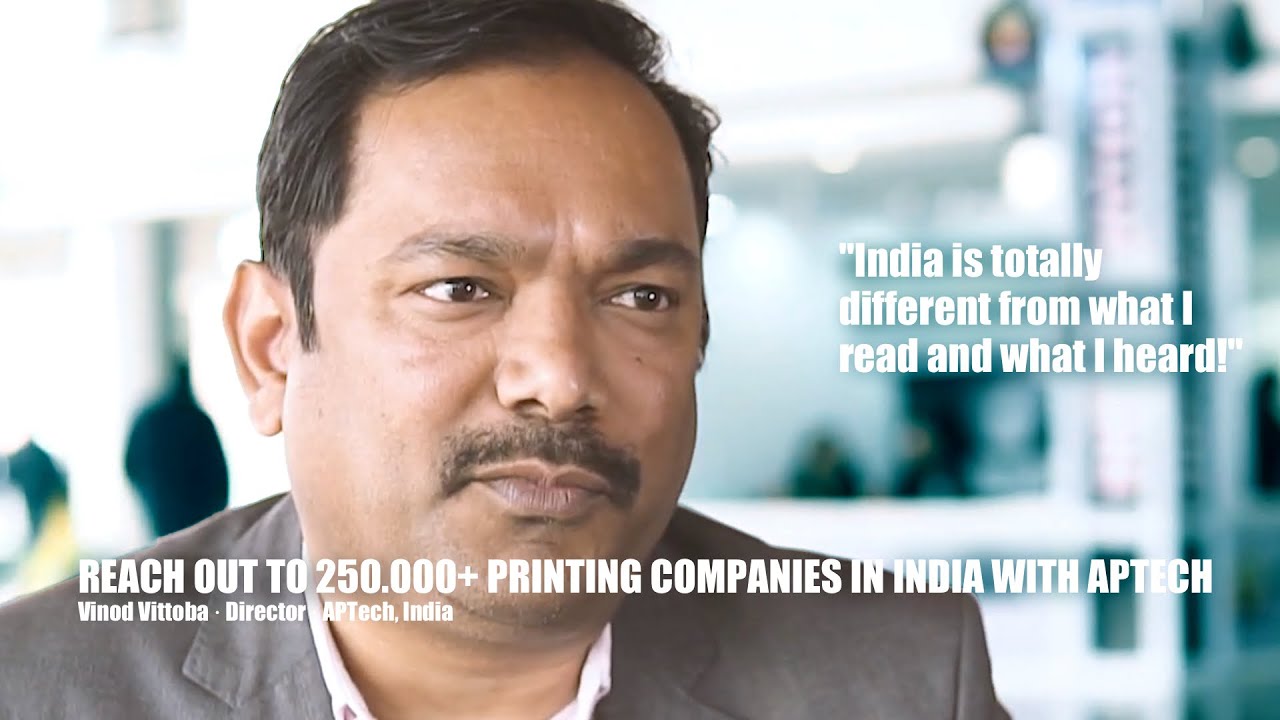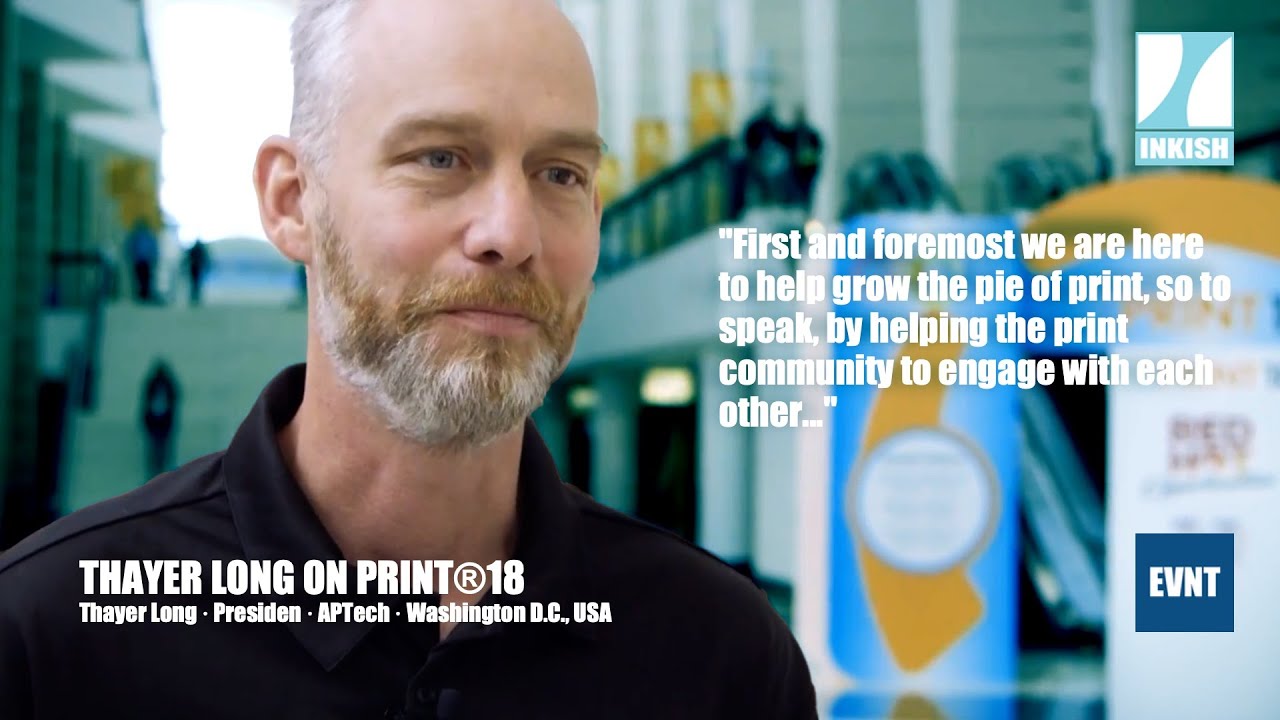INKISH.TV proudly presents: Thayer Long · President · NPES, Virginia · USA
Thayer Long became head of NPES just 18 months before this interview was recorded at Print17 in Chicago – and we are SO happy that Thayer took time to talk to us about the state-of-the-union in the US right now. In this ‘Conversations” program your humble editor Morten Reitoft and Thayer Long have a chat about the industry. I hope you like…
Nice to meet you.
Nice to see you.
Yes. And, thank you for taking time here at your busy exhibition at PRINT 17 Chicago.
Yes. Thank you very much. It’s wonderful to see you.
Who are you?
I am Thayer. Thayer Long. I’m the president of NPES. NPES is the association here in the United States, and our members are the technology providers, the exhibitors here at PRINT 17. Our members produce all the equipment, as well as all the graphic art supplies and the consumables and so forth that support the industry.
And I guess that, I mean, you have been here for 18 months now, so it’s still pretty new.
Very, very new. Very new.
But, I guess that youíre a concessionaire. If any has probably experienced some of the changes in this industry during the past since the financial crisis.
Yes. Very much, very much. I mean, industries and transformation. I think too often, this term disruption. I think itís starting to become overused, because in my opinion, the disruption is really nothing more than another word to say change. And, of course, we all know that things always change. But, the industry like many industries, the industries that I’ve worked in the past, itís going through great transformation, and I think we’re seeing great success as printers and agencies and as the providers are learning to change and adapt.
I think it’s great that you take the positive approach because I was actually also imagining. And, I’m not trying to put words in mouth of you but you know that the change is also a matter of having change in time, right? And, when you have something as radical as a financial crisis, and the market, I think, globally has changed. I mean, if you look from the supply and demand from the customer, end-customers, it has really decreased very, very rapidly. So, I think that at a foreign organization like you, both with the memberships and also with having an event like this, haven’t you seen or experienced decrease? And, I saw some of the booth were a little bit smaller this year, for example.
Well, you know, we don’t measure the success of a show for instance based on size. We measure the success, our people making connections, is the supply chain getting together, and working through solutions together in order to be profitable.
So, does that mean that if you look at the number of members you have in your organization, and if you look at the revenue generated, especially in American industry, it has not really affected anything?
I think, just through any transformation, we’ve seen companies come, and we’ve seen companies go. So, yes, I think on both sides. But, I think the industry is very, very strong and continues to grow, and I know that there’s going to be people that are going to dispute that. And, they’re going to say, ìHow can you say with a straight face that the industry is growing?î Well, you know, if we’re not going to say that the industry is growing, then what are we doing here. You know, we might as well just pack it in and do something else. So, there is growth opportunities, you just have to know where to look for it. I’ve sat through a really wonderful program today, heard from the chief marketing officer of St. Joseph Communications at Toronto. And, his program was on how print and digital worlds are colliding, and look at all the wonderful things now that we’re able to do through using print, combining it with AR, augmented reality, virtual reality, and the RFID capabilities, and things that you’re seeing that you already have seen in the industry for so long, and I think you’re saying to take more of a prominent role.
So, do you think that ñ I mean, I appreciate what you say, because I totally agree with you, even though I didn’t participate in the event. But, I’m just wondering, because actually we spoke to Ron Gilboa from Keypoint Intelligence yesterday about new print, and we spoke about that, to our industry some of the things that canít be seen as kind of let’s say, new print, is actually just new, because the commercial printers are starting to adapt 3D printing and printed electronics, you know, those kind of thing. I was just wondering when you talk about these marketing trends that you just referred to, is our industry and the players in the market, are they able to cope with all these changes and adapt that into the businesses and make sure that customers buy them, or is that a place for new rollers?
I think there’s going to be a combination. You’re going to certainly have the existing players that are going to have to learn to adapt and evolve, or not. And, we all know what that outcome would be. And then, there’s going to be opportunity for new players to come into the market, and I think that’s the natural course of things. Right? And so, I think there’s nothing wrong with that. I think we need to embrace it. I do think we need to look at the positioning of the industry, and the companies within the industry, not just ours, being able to live in really a world of uncertainty, in some cases. We have to be comfortable with the fact that we don’t know what tomorrow will always bring, and that’s a total attitudinal positioning that some people are going to be comfortable with and others won’t.
We’ve made an interview with Frank Romano last year, in Orlando actually, and as I’m quoting just out of my head, and I said that, ìWhen my students has been participating in some of my classes, the only thing they have hopefully learned when they are finished with the classes, is that there’s only one thing that is evidence, and that is change.î Right? We kind of referred to the saying.
Absolutely, absolutely. And, I think our industry is what, well ancient, right? But, in terms of the press, five, six hundred years old, and I think the industry and the companies within the industry have to think of themselves as sort of a 500-year old startup company. And, that’s really kind of how certainly NPES is attempting to, and will be positioning itself coming forward.
So, is NPES (Now Association for Print Technologies) – I mean, do you see your role also in making sure that your members and the industry will be able to actually take the shot on doing all these nice, new things, or is that a role that you see NPES in all that?
Yes. I think our role as NPES is to help be a thought leader within the industry, not the only one, but be a thought leader, be a player within the industry. And, our goal and our positioning is to help connect the industry and connect the different elements of the supply chain together. And, as the industry does get more complex really, through the technology, through the application, the complexity of these projects is going to require greater collaboration between the different elements of the supply chain. So, as an example, traditionally you could argue that manufacturers dealt primarily with the people that were buying and using their equipment. I think what you’re saying now is that there’s got to be a greater collection and array of players at the table in order to execute. So, it’s not just the technology provider and the printer, but you may also have to bring in the creative agency, the brand owners, all working together in order to execute a project. And so, our role, I believe going forward is going to really be strengthening those connections in bringing the industry together in alignment, in order to achieve growth.
That’s interesting, because Jan and I participated in an industry event in Denmark two weeks ago, and one of the speakers, there was like a company that was hiring, headhunting company for large design agencies. And, he said that the people that we are hunting, and the people that are in the highest demand is people with IT skills, because if you want to execute printed or electronic advertising and campaigns, you need to be able to get data that is relevant. Otherwise, you will not have a chance to execute orderly, right? So, I think that when you say that you have these kind of businesses that has to work together, I think that also other kind of qualifications will apply to getting successful in our industry.
Absolutely. And, I think we’re seeing that with the industry as weíre growing and transforming, and we’re seeing that the people in the industry grow, or in some cases begin to move on to do something else. We are looking at what the new talent needs to have in order to be successful in this industry. And, your point about the data, absolutely. So, obviously you need someone that knows how to work the equipment, but then you also need to know someone all the data, and the massive amounts of data now that are being collected, that is being collected, and being integrated into an omni-channel marketing program, for instance.
Yes, because when you say omni-channel, I think that is ñ I mean, I don’t know so many American printers, but when I look at some of the European printers I know, I think that you have the big ones like District Printing, same press, like this, and you have a lot of Mom and Dad shops. And, I think that if you look at the investment horizon they have, or the investments what you call scope, they have, it’s difficult to imagine that maybe 80% of the printers, which are primarily family-owned Mom and Dad shop, they should have the skills and the money to invest in this area. So, I think it’s also from an industry perspective, it needs to kind of be supported information-wise, and how do you actually ñ Do you get me at all?
Yes, I do. And, I think that’s going to be important going forward as we look to the future, and we look to the new talent coming in.
Yes, because I was thinking when you say about NPES is not measured by sizes of booth, right? Of course. But, if 80% of your members, customers disappear, then the exhibition and the member of this age in NPES ñ I mean, the entire industry will be completely different.
And, that’s why our focus for the exhibition for instance is really focused on helping the attendee come and help grow their business. And, that’s what the technology providers are here to do, the manufacturers are here to do. We have an analogy, ìA rising tide floats all boatsî, and so our objective is to help grow the industry overall.
But, that is a good one because that is ñ You know, I actually spoke to ñ I can’t remember, somebody here in the floor yesterday, and said that if you look at a lot of the manufacturing ñ I mean, if you just take an example, the industry is really pushing inkjet, right? But, it’s funny because if you ask consultants who are visiting printing houses how they can make their own business better, they often say, ìDon’t focus on technology. Don’t focus on that. You should focus on applications. You should focus on the creating added value for your customers.î And then, technologists are supporting whatever way you want to do that. But, when you go to trade shows, itís like, ìI’m heavy if Iím just behind you.î Everybody here is focusing on equipment, on products, and technology, and maybe less on how we can actually make sure that that technology is used to help our customer, end-customers.
Well, I do think that’s happening. I will say I do think.
Also here?
Yes. I do think. I think that the companies here, weíre more focused on begin with the end in mind. Right? So, begin with what are you attempting to achieve, what application are you attempting to produce, and then let’s find the technology that’s right for you. And, I think you’re seeing that in this industry, you look at all the partnerships now that are occurring between manufacturers working together, because they realize that the best way to help the printers grow is by giving them, by putting as many tools in their toolbox as possible in order to achieve the desired outcome. And, that’s really encouraging to see, and that’s what makes it, you know, as you said earlier, only having been eighteen months in the industry, but that really makes it exciting and enthusiastic for me to really see members, like the NPES members working together, working collaboratively to healthy competition. Right? But, working together, developing partnerships to really help their customers succeed and grow. And so, that’s very ñ
Well, I congratulate you on the show, because I mean, it’s the first time I attend a PRINT show. Otherwise, it’s been the graphics guys. I mean, yes. And, I was under – Stupid me, because I didn’t read on. I didn’t do my homework. I thought that this PRINT was more like, well maybe similar more to Drupa, that it was like the premiere thing. And then, I was like surprised when I came here because there’s a lot of smaller exhibitors, as well. And, you know when you have browsed through the must seams, then you also start to see that you have like still evaluating their craftsmanship. You see some with gilts, you see some with signs, you see somebody who’s doing something that maybe not have a huge market, but having maybe the niche where you have high profit, which is as you said, we have like a 500-year start of history. Right? So, to some extent, we just can’t just forget the past in order to maybe seek for further solutions in the future, as well.
Yes. But, I think we need to have that mentality of a startup, alright? Because, and that’s the point, and I’m not alone in that. I remember reading something with GE, the big company, and Jeff Immelt, when he transformed that company and said, ìWe’re trying to think of ourselves as a 125-year-old startup. So, I think there’s a lot to that, right? Beginning to sort of think differently, and if you think differently, then actions tend to follow, and they’re positive ones. So, yes, we’re very excited, and I think the industry here and certainly North America’s, I feel very strong, and it certainly has a bright future. But, how we will get there, I think is to be determined, and again I think we have to be comfortable with that. We have to be comfortable with knowing that we have it, we sort of know where we think we want to go. How we’re actually going to get there is going to change day to day, and it’s a lot of it, because the consumer really has become the CEO in a lot of respects. I heard that today.
How annoying is that? I mean, we thought we had like a senior position, now everybodyís CEO.
Yes. That’s right. But, we can’t fight that. So, we just got to figure out a way, and that’s what businesses do. They’re in business to solve problems, and a lot of times and so, it’s just a problem or we could view it as a problem or just view it as an opportunity. Alright? So, this is what the market is giving us. We can maybe try to change it a little bit and be successful, or we can also just find ways to adapt and evolve, and also be successful in approaching it that way.
Before we stop, I would like to touch upon one more thing. And, that is, some of the things that I have noticed also in your conversations with the nice people from PR world is that you said that you have also done some changes to PRINT 17 in order to make a kind of new. Can you probably just tell me a little bit about it?
Well, I think it’s about bringing the community of PRINT together once a year in North America, and that does distinguish us obviously from other shows. And, we are a show that does occur every year, and because the industry needs a place to come and to gather and to learn from each other, learn from the providers. And so, that’s been our focal point. It’s really working on asking our attendee, the printers, who we all need to be successful. What are their up at night challenges?
So basically, one of the things that you have put as a new thing in PRINT 17 is that you communicate closer with attendees?
Very much so. Not that we haven’t in the past, but really working with our attendees, finding out what they’re up at night challenges are, and then providing them solutions to help them sleep at night. But, those solutions come in a variety of ways. They certainly come on the exhibition floor, alright, which you see behind me. Absolutely. But, they’re also happening in educational programs that we’re putting together. We’ve really emphasized and focused on that quite a bit. We’re offering quite a bit of free education that goes on, on the show floor, in addition to our great friends at the printerverse, and so forth. And then, also just on the networking opportunities, bringing people together through the education and through some activities on the show floor is really, really important. And so, that’s what our emphasis has been, and that’s where our investment has been, as well as also to our exhibitors, and helping support them, bring the machinery, that vast amounts of equipment that you see behind me.
I mean, that’s pretty a lot of things here on the floor.
There’s quite a bit, and we’re very happy to see that. So, that’s our emphasis. Our emphasis is to use this event to help the industry grow.
And now, I have got to know you a little bit more than I did an hour ago, I feel quite comfortable that you have also some ideas for the 18 show, right?
We do, we do. Well, I think what you’ll see is a continued building off of what you’re seeing here, and we’ll be here back in Chicago.
So, can we make an appointment next year too?
Well, I’d love to sit down with you again next year. I will. I’m sure we have some other changes that we’ll announce. But, just like I said, don’t exactly know what those changes are going to be. We’re going to have to see.
Maybe, Iíll be the one that makes the interview.
Maybe. I don’t know the changes, but we’ll have to see, we’ll have to build off of this, and I can’t say for certainty what it will look like in a year. But, I have some ideas, and we’ll work towards those.
Sounds great. Thank you very much Thayer.
Thank you so much.
































































